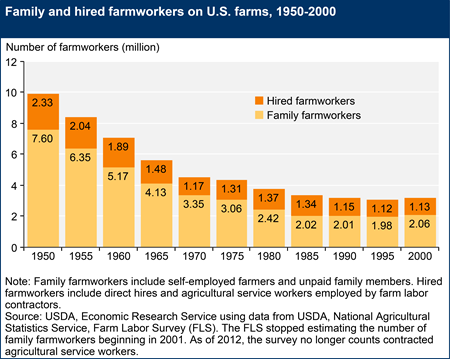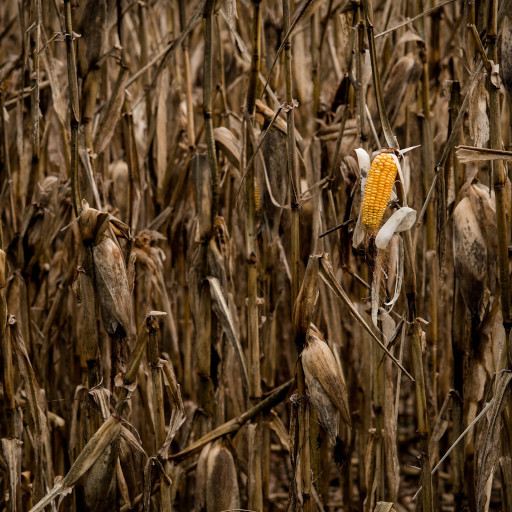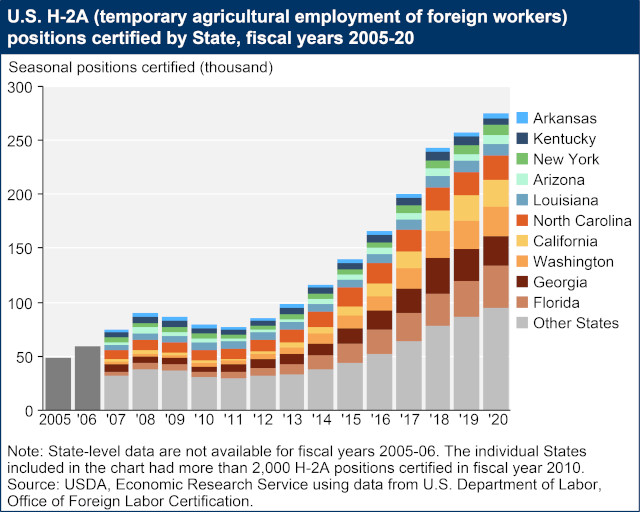"Would you rather import your food or your labor?"
Justin Ferguson, Mississippi Farm Bureau Federation
A simple Google search for "labor shortages in agriculture” will yield results going back years - it’s clear that this is a perennial problem for food producers. But what are the realities of the situation today?
In this article, we take a look at the labor shortage in agriculture. We took a deep dive into some of the historical trends and the current challenges, and even asked a few experts what they expect in the future if the current trends continue.
Labor Shortage in Agriculture: What the Data Says
According to the 2017 U.S. census of agriculture, the average age of North American farmers is nearing 60, and only 9% of food producers are under 35 years old. For the past few generations it seems, young folks haven't considered farming a viable option. With the cost of farmland rising, the price of commodity crops falling, and the lure of more high-paying work, there seems to be little incentive to return to the family farm.
But young, domestic labor is just one part of the shrinking agricultural workforce.

The Shrinking Agricultural workforce: What's going on?
The leading problem analysts tend to point to is this: a general decline in agricultural interest across the board (at least in North America). Experts claim this declining trend in agricultural interest has many contributing factors, such as:

- High real estate and land prices create a "barrier to entry".
- Expensive initial investment and cost of machinery.
- Up and down nature of commodity crop pricing.
- Unpredictable weather and an increase in extreme weather events such as drought and flooding
- Unequal work-life balance.
- The physical demands of the industry and exposure to the elements turn many workers away
- Increased access to education and better job opportunities reduce the number of "unskilled laborers."
- Inefficient seasonal worker visa programs.
How the Farm Labor Shortage Affects Food Production and Farm Owners
The most obvious effect of an agricultural worker shortage is of course, less and more expensive food. The second major effect though is most visible to farmers, who now have to offer better pay to attract and keep talent.
But for many, the only alternative is not to harvest; to plow it back into the soil for the worms. According to a 2019 report from the Government of Canada, close to 13 percent of fruits and vegetables grown in Canada go unharvested or are discarded. More and more, the increase in farm labor expenses outweighs the potential revenue for crops.

Projected Futures: How Will this "Semi-Permanent" Labor Shortage Affect Agriculture?
The short answer: it will shape it for many years to come.
Smart, forward-looking farm managers are exploring options and focusing on key strategies to cope with the current farm worker shortage. Here's a short list of methods being tested now.
- Exploring alternate equipment that requires fewer boots on the ground.
- Changing production systems for the same reason.
- Switching from conventional tillage to no-till methods, for example, can cut down on field operations and requires fewer laborers to operate the machinery necessary.
- Thinking seasonally and teaming up with other local producers.
- Instead of keeping the farm operating year-round, farms can share a labor pool and stagger their harvests.
- "Teams" of specialists can be trained and bussed from site to site.
- Doing so can also help cut overall labor costs by splitting the housing and benefits with other producers.
- Exploring new technology.
- Tools like autonomous machinery, drones, mobile devices, and precision ag technology may partly offset human labor. These tools allow farmers to better use available (or seasonable) labor.
- Working with outside labor.
- Contract operators can conduct some field operations like custom applicators and specialty services.
- Offering bigger and better incentives to retain current workers and attract new workers.
- To attract more domestic farm laborers, operators are increasingly providing employee benefit package incentives like pension plans, paid vacation, subsidized housing, working allowances, and profit-sharing bonuses. By offering more competitive employee benefits, operators hope to drive domestic workers back to the industry.
Smart Technology Advancements
But it does seem likely that without innovation and technology, there will be difficulties in keeping food affordable. Hundreds of digital solutions are in development today to address the current labor shortage crisis. Many of these clever solutions can significantly increase the farm's efficiency and improve the working conditions for workers simultaneously.
Smart Agricultural and tech-centric solutions worth looking into for farm managers:
- Cloud computing for connecting data with decision-makers
- A.I. and machine learning to help decision-makers.
- Wireless, remote sensors feed data to the cloud.
- Predictive forecasting models that use the data to identify trends
- Advanced automation like drones and self-driving tractors
- Robotics to help pick, sort, pack, and ship
Smart farming technology allows farmers to continue operations with fewer workers but has limitations. Current technology only accommodates certain crops, excluding a huge variety of specialty crops.
This forces specialty farmers to consolidate their operations or transition to machine workable crops.
Transitioning to smart farming technology also requires a high initial cost investment. This is particularly difficult for small to medium-sized farms, which are hit hardest by the effects of farm labor shortage. Despite these drawbacks, many farmers realize the investment is worth the initial cost to enhance crop quality and quantity.
Changes to Legislation and Policy Reform
All the players in this human-robot balancing act seem to agree, labor and immigration reform is badly needed.

Indeed, it seems a win-win to make it easier to get seasonal and temporary farm workers into the fields where the work needs to get done. Legislation like the Farm Workforce Modernization Act in the USA includes plans to improve the H-2A guest worker program, and to establish a new visa category for certified agricultural workers.
Here in Canada, reforms to the SAWP (seasonal agricultural worker program) are in progress as well, both to simplify the process, but also to make the program safer and more attractive to workers.
For farm owners, access to funding and financing is also crucial to keeping many farming operations afloat. Simple changes in how farms access capital and pay it back can be extremely helpful in allowing small to medium size farms to adapt and modernize.
Conclusion
The labor shortage in agriculture is very real, and the data shows that this is a global problem and spans all sectors of the economy, not just agriculture. There are a multitude of cultural and economic factors that lead to declining interest in agriculture. Still, it seems clear that labor policy reform and offering better pay and benefits seem to be the best options for farm managers looking to attract and retain talent.
Croptracker develops agtech solutions for industry leaders. Located in Eastern Ontario, Canada, our mission is to make crop production safer, more efficient, and more profitable. Designed in partnership with fresh market producers and distributors, every tool we create is based on direct industry feedback. Croptracker’s award-winning farm software optimizes recordkeeping, labor tracking, production and cost management. Our integrative Harvest Quality Vision technology offers instant empirical analysis of crop samples exactly when you need it. Optimize your harvest season with Croptracker’s customizable solutions. Visit Croptracker.com to learn more about our products and contact us for app based solutions.
References
Farm Bureau: Labor Shortages Continue to Impact Farmers
NBCNews: Farmers Pushing Immigration Reform
AgAmerica The Impact of the Farm Labor Shortage


